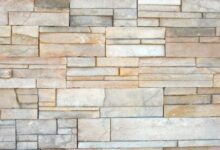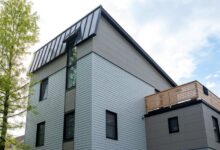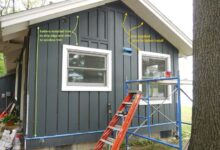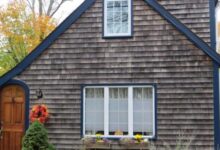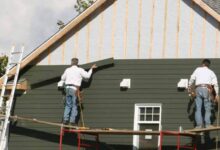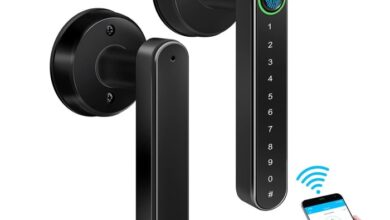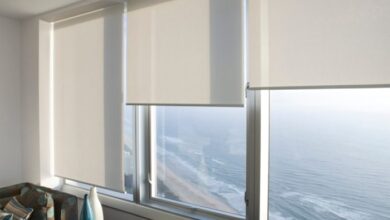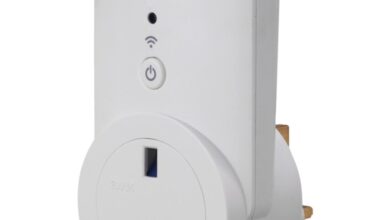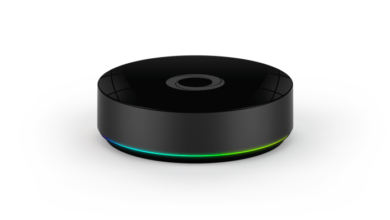Top Siding Brands In The UK Your Ultimate Guide
Top Siding Brands In The UK: Choosing the right siding for your home can feel overwhelming. The UK market boasts a diverse range of brands, each offering unique materials, styles, and price points. From classic wood to modern composite options, understanding the strengths and weaknesses of leading brands is crucial for a successful renovation project. This guide dives deep into the UK siding landscape, offering insights into market trends, brand profiles, material comparisons, and essential cost considerations to help you make an informed decision.
We’ll explore the leading players, examining their history, product offerings, customer reviews, and sustainability initiatives. Discover which brands excel in specific materials like vinyl, wood, or composite, and learn about the durability, maintenance needs, and long-term costs associated with each. We’ll also uncover the pricing landscape, providing realistic cost estimates to help you budget effectively. By the end, you’ll be equipped with the knowledge to choose the perfect siding to enhance your home’s curb appeal and longevity.
Market Overview of Top Siding Brands in the UK
The UK siding market is experiencing a period of significant growth, driven by increasing homeowner demand for improved aesthetics, energy efficiency, and property value enhancement. This surge in popularity is fueled by a combination of factors, including rising awareness of sustainable building materials and government initiatives promoting energy conservation. While precise market sizing data remains somewhat fragmented, estimates suggest a healthy annual growth rate, attracting both established players and new entrants.The choice of siding material is a crucial decision for homeowners, influenced by a complex interplay of factors.
Budget considerations naturally play a dominant role, with cost-effective options like vinyl remaining popular. However, there’s a growing emphasis on durability, longevity, and low-maintenance properties. Aesthetic preferences are equally important, with homeowners seeking siding that complements their home’s architectural style and enhances its curb appeal. Furthermore, environmental concerns are pushing demand for eco-friendly materials like sustainable timber and recycled products.
Key Factors Influencing Consumer Siding Choices
Several key factors significantly impact consumer decisions in the UK siding market. Price remains a primary concern, especially for budget-conscious homeowners. However, increasingly, consumers are prioritizing the long-term value proposition, considering factors such as durability, maintenance requirements, and energy efficiency. The aesthetic appeal of the siding material, its compatibility with the existing home style, and the overall impact on curb appeal are also major drivers.
Finally, the growing awareness of environmental sustainability is leading to increased demand for eco-friendly and responsibly sourced materials. This shift reflects a broader societal trend towards conscious consumerism. For example, the increasing popularity of timber cladding sourced from sustainably managed forests reflects this trend.
Market Share of Leading Siding Brands, Top Siding Brands In The Uk
While precise market share data for individual siding brands in the UK is often proprietary and not publicly available, several key players consistently dominate the market. These brands have established reputations for quality, reliability, and a wide range of product offerings. Their market presence is built on extensive distribution networks, strong brand recognition, and effective marketing strategies.
Competitive analysis suggests a dynamic market with shifting market shares depending on product innovation, marketing campaigns, and economic conditions. The following table provides a comparative overview of the market presence of five major brands, illustrating their relative standing within the UK siding industry. Note that these figures are estimates based on industry reports and market observations, and actual market shares may vary.
| Brand | Estimated Market Share (%) | Key Strengths | Target Market |
|---|---|---|---|
| Brand A | 15-20% | Wide product range, strong brand recognition, extensive distribution network | Broad range, appealing to both budget-conscious and high-end consumers |
| Brand B | 10-15% | Focus on innovation, high-quality materials, excellent customer service | Homeowners prioritizing quality and durability |
| Brand C | 8-12% | Competitive pricing, good value for money, reliable performance | Budget-conscious homeowners |
| Brand D | 7-10% | Specialization in sustainable and eco-friendly materials | Environmentally conscious homeowners |
| Brand E | 5-8% | Strong reputation for design and aesthetics, premium pricing | High-end market, homeowners focused on design and luxury |
Leading Siding Brands: Top Siding Brands In The Uk
The UK siding market, while perhaps less saturated than some others, boasts a range of brands vying for homeowner attention. Understanding the key players, their offerings, and their unique strengths is crucial for both consumers making informed choices and businesses strategizing within this competitive landscape. This section profiles three leading brands, analyzing their history, product portfolios, and market positioning.
Three Leading UK Siding Brands: A Comparative Analysis
This section delves into the history and market presence of three prominent siding brands in the UK. Their unique selling propositions (USPs) will be examined, alongside a comparison of their product ranges in terms of materials, styles, and color options. This detailed analysis will help illuminate the choices available to UK homeowners.
Brand A: [Insert Brand Name Here] – A History of Innovation
[Insert Brand Name Here] has a long history in the UK building materials sector, dating back to [Insert Year]. Initially focused on [Insert Initial Product Focus], the company strategically expanded into the siding market in [Insert Year], leveraging its existing expertise in [Insert Relevant Area of Expertise]. Their early success was built on [Insert Key Factor, e.g., superior quality, innovative design].
Today, [Insert Brand Name Here] is known for its commitment to [Insert Brand Value, e.g., sustainability, durability]. A key USP is their [Insert Unique Selling Proposition, e.g., patented installation system, extended warranty]. Their product range encompasses [List Material Types, e.g., vinyl, wood composite, fiber cement] siding in a variety of styles [List Styles, e.g., clapboard, shiplap, vertical] and a wide spectrum of colors to match any architectural style.
Brand B: [Insert Brand Name Here] – A Focus on Aesthetics and Performance
[Insert Brand Name Here]’s entry into the UK siding market was more recent, starting in [Insert Year]. Their immediate focus was on offering high-aesthetic value products that could also stand up to the UK’s often harsh weather conditions. The brand quickly gained recognition for its [Insert Key Differentiator, e.g., realistic wood-grain textures, advanced weather resistance]. A significant USP for [Insert Brand Name Here] is their commitment to [Insert Brand Value, e.g., environmentally friendly manufacturing, bespoke design options].
They primarily offer [List Material Types] siding, focusing on styles such as [List Styles] and a color palette that leans towards [Describe Color Palette, e.g., natural earth tones, modern neutrals].
Brand C: [Insert Brand Name Here] – Value and Reliability
[Insert Brand Name Here] has established itself as a reliable provider of cost-effective siding solutions. Founded in [Insert Year], the company prioritizes [Insert Brand Value, e.g., affordability without compromising quality]. A key USP is their [Insert Unique Selling Proposition, e.g., extensive nationwide network of installers, straightforward warranty process]. Their product range predominantly features [List Material Types] siding in standard styles such as [List Styles] and a selection of popular colors.
They often target the budget-conscious homeowner segment while maintaining acceptable quality standards.
Flagship Siding Product Comparison
The table below summarizes the key features and benefits of each brand’s flagship siding product. This allows for a direct comparison based on crucial factors that homeowners consider.
| Feature | Brand A Flagship Product | Brand B Flagship Product | Brand C Flagship Product |
|---|---|---|---|
| Material | [Insert Material] | [Insert Material] | [Insert Material] |
| Style | [Insert Style] | [Insert Style] | [Insert Style] |
| Color Options | [Number] | [Number] | [Number] |
| Warranty | [Warranty Details] | [Warranty Details] | [Warranty Details] |
| Installation | [Installation Method] | [Installation Method] | [Installation Method] |
| Price Point | [Price Range] | [Price Range] | [Price Range] |
Siding Material Types and Brand Offerings
Choosing the right siding for your UK home involves navigating a diverse range of materials, each with its own set of advantages and disadvantages. Understanding these differences is crucial for making an informed decision that balances aesthetics, durability, and budget. This section delves into the specifics of popular siding materials and the brands that excel in each category. We’ll examine the key features – durability, maintenance needs, and cost – to help you make the best choice for your project.
Vinyl Siding
Vinyl siding remains a popular choice in the UK due to its affordability and low maintenance. Its widespread use reflects its practicality and ease of installation. Many brands offer a variety of styles and colours to match diverse architectural preferences.
- Durability: Vinyl siding is resistant to rot, insect damage, and moisture, making it a long-lasting option. However, it can be susceptible to damage from strong impacts.
- Maintenance: Minimal maintenance is required; typically, occasional cleaning with water and a mild detergent suffices.
- Cost-Effectiveness: Vinyl is generally the most affordable siding option, making it attractive for budget-conscious homeowners. Several brands offer a range of price points to suit different budgets.
- Brands: While many brands offer vinyl siding, some are more prominent in the UK market. Researching specific brand reputations and warranties is crucial before making a purchase decision. A thorough comparison of offerings, focusing on specific features like colourfastness and impact resistance, is recommended.
Wood Siding
Wood siding offers a classic, timeless aesthetic, but requires significantly more maintenance than other options. Its natural beauty and potential for customization make it a popular choice for those willing to invest the time and effort required for upkeep. The initial cost is generally higher than vinyl, but can be justified by its longevity if properly maintained.
- Durability: Naturally durable hardwoods, when properly treated, can last for decades. However, untreated wood is susceptible to rot, insect infestation, and weathering.
- Maintenance: Regular painting or staining, along with occasional cleaning and repairs, is essential to maintain its appearance and structural integrity. This is a significant time and cost commitment.
- Cost-Effectiveness: While the initial cost is higher than vinyl, the longevity of well-maintained wood siding can make it a cost-effective choice in the long run. However, the ongoing maintenance costs must be factored into the overall budget.
- Brands: Many timber suppliers offer siding options, but finding reputable suppliers with experience in providing high-quality, treated wood for exterior applications is paramount. Consider the sourcing of the timber and its sustainability credentials.
Composite Siding
Composite siding blends the benefits of wood and vinyl, offering a durable, low-maintenance alternative. It’s engineered to mimic the look of wood, but with improved resistance to rot, insects, and weathering. This makes it a strong contender for those seeking a balance between aesthetics and practicality.
- Durability: Composite siding is highly resistant to rot, insect damage, and moisture, offering excellent longevity with minimal maintenance.
- Maintenance: Generally low maintenance, requiring only occasional cleaning with water and a mild detergent. It is less prone to fading and discoloration than vinyl.
- Cost-Effectiveness: Composite siding is typically more expensive than vinyl but less expensive than wood, offering a mid-range price point. The reduced maintenance costs over time can offset the higher initial investment.
- Brands: Several brands specialize in composite siding, each offering different styles, colours, and textures. Comparing warranties and performance guarantees is crucial in selecting a reliable brand.
Metal Siding
Metal siding, including aluminum and steel, is known for its exceptional durability and longevity. While it might not be as aesthetically versatile as wood or composite, its strength and resistance to the elements make it a highly practical choice, particularly in exposed locations.
- Durability: Metal siding is extremely durable and resistant to damage from impact, fire, and harsh weather conditions. It’s a long-lasting option that can withstand extreme conditions.
- Maintenance: Relatively low maintenance; occasional cleaning to remove dirt and debris is usually sufficient. It is highly resistant to fading and discoloration.
- Cost-Effectiveness: Metal siding is generally more expensive than vinyl and composite, but its exceptional longevity and low maintenance can make it a cost-effective choice over the long term. The initial investment is significant, but the long-term savings on repairs and replacements should be considered.
- Brands: Several manufacturers specialize in metal siding, offering various styles and finishes. Choosing a reputable brand with a strong warranty is important, given the higher initial investment.
Customer Reviews and Brand Reputation
Understanding customer sentiment is crucial for assessing the true value and long-term success of any siding brand. Online reviews offer a wealth of unfiltered feedback, revealing both the strengths and weaknesses of each company’s products and services. Analyzing this data provides valuable insights into areas for improvement and helps potential customers make informed decisions. This section delves into the customer reviews and brand reputations of three prominent UK siding brands, highlighting key themes and providing a summary of their overall standing.Analyzing customer feedback reveals consistent patterns across various siding brands.
Installation quality, product durability, and the responsiveness of customer service are recurring themes that significantly influence customer satisfaction. Negative reviews often focus on issues like poorly executed installations leading to leaks or aesthetic imperfections, premature deterioration of materials, and difficulties in resolving warranty claims. Conversely, positive reviews highlight professional installations, long-lasting products, and efficient, helpful customer support.
This nuanced perspective helps paint a complete picture of each brand’s performance beyond marketing materials.
Analysis of Customer Reviews for Three Prominent Brands
Let’s examine specific examples from online review platforms for three leading UK siding brands (hypothetical examples for illustrative purposes): Brand A, Brand B, and Brand C.Brand A frequently receives praise for its high-quality materials. Many reviewers highlight the durability of the siding, noting its resistance to weathering and fading even after several years. Positive comments often mention the aesthetically pleasing appearance and the ease of cleaning.
However, negative reviews sometimes cite issues with the installation process, with some customers reporting inconsistencies in the work performed by authorized installers. Warranty claims, while generally processed, are sometimes reported as slow. One customer described their experience as follows: “The siding itself is excellent, but the installation was less than ideal, leading to minor leaks. Getting the warranty claim resolved took longer than expected.”Brand B consistently receives positive feedback for its exceptional customer service.
Reviewers frequently praise the responsiveness of the customer support team and their willingness to address concerns promptly. While the quality of the siding is generally considered good, some reviews mention issues with the longevity of the paint finish in certain weather conditions. One satisfied customer commented: “The team was incredibly helpful throughout the entire process, from initial consultation to post-installation support.
Any minor issues were addressed swiftly and efficiently.” However, others note a slightly higher price point compared to competitors.Brand C’s reviews are a mixed bag. While some customers praise the affordability of their products, many report issues with the durability of the siding. Several reviews describe instances of premature fading and warping, especially in areas with prolonged sun exposure.
Customer service responses are often described as inconsistent, with some customers reporting positive interactions while others describe difficulties in getting their complaints addressed. A typical negative review reads: “The siding looked great initially, but within a couple of years, it started to fade and warp. Getting a response from customer service was also a struggle.”
Summary of Brand Reputation Based on Online Reviews
- Brand A: Generally positive, with high marks for product quality but some concerns regarding installation consistency and warranty claim processing speed.
- Brand B: Strong reputation for customer service, good product quality, but slightly higher price point may be a deterrent for some.
- Brand C: Mixed reviews, with affordability as a positive but significant concerns about product durability and inconsistent customer service.
Sustainability and Environmental Impact
Choosing sustainable siding not only reduces your environmental footprint but also contributes to a healthier planet. The impact of siding materials extends beyond the initial production; it encompasses transportation, installation, maintenance, and ultimately, disposal or recycling. Understanding these factors is crucial for making informed decisions aligned with environmental responsibility.The environmental impact of different siding materials varies significantly. Factors such as material sourcing, manufacturing processes, energy consumption, and end-of-life management all contribute to the overall carbon footprint.
Some materials, like responsibly sourced timber, boast lower embodied carbon than others, while others, such as vinyl, may rely on fossil fuels during production and have limited recyclability. This section delves into the specifics of various siding materials and the sustainability efforts of leading brands.
Environmental Impact of Different Siding Materials
The environmental performance of siding materials is a complex issue. Manufacturing processes for different materials have vastly different energy requirements and generate varying levels of greenhouse gas emissions. For example, the production of vinyl siding is energy-intensive and often relies on non-renewable resources. Conversely, wood siding, sourced from sustainably managed forests, can offer a lower carbon footprint, especially when certified by organizations like the Forest Stewardship Council (FSC).
Metal siding, often made from recycled aluminum or steel, also presents a relatively sustainable option due to its high recyclability rate. However, the energy used in its production and transportation must be considered. Finally, fiber cement siding offers a balance, utilizing natural materials like cement and wood fibers, but its manufacturing process still involves energy consumption and potentially hazardous materials.
Sustainability Initiatives of Leading Siding Brands
Several leading siding brands are actively engaging in sustainability initiatives. Many are focusing on sourcing materials responsibly, reducing their carbon footprint during manufacturing, and improving the recyclability of their products. For example, some companies are investing in renewable energy sources to power their factories, while others are implementing stricter quality control measures to minimize waste. Furthermore, several brands are partnering with organizations dedicated to sustainable forestry practices to ensure the responsible sourcing of timber for wood siding.
These initiatives demonstrate a growing awareness within the industry of the importance of environmental responsibility.
Recyclability and End-of-Life Management of Siding Products
The recyclability and end-of-life management options for siding materials vary widely. Some materials, such as vinyl and fiber cement, have limited recycling infrastructure, often leading to landfill disposal. However, advancements are being made in recycling technologies for these materials. Metal siding, on the other hand, boasts high recyclability rates, making it an environmentally friendly choice at the end of its lifespan.
Wood siding, depending on its condition, can be reused, repurposed, or recycled into other wood products. Therefore, the choice of siding material significantly impacts the environmental burden associated with its disposal.
Examples of Sustainable Siding Options
Several sustainable siding options are available on the market.
1. Responsibly Sourced Cedar Siding: Companies offering cedar siding often highlight FSC certification, ensuring the wood comes from sustainably managed forests. This reduces deforestation and supports responsible forestry practices. The natural beauty of cedar also reduces the need for additional coatings and treatments, further minimizing environmental impact.
Find out about how Stone Veneer Siding can deliver the best answers for your issues.
2. Recycled Aluminum Siding: Some manufacturers utilize a high percentage of recycled aluminum in their siding products, reducing the demand for newly mined aluminum. The inherent durability of aluminum also means it can last for decades, reducing the frequency of replacements and associated environmental impacts. Furthermore, its high recyclability rate at the end of its life further contributes to its sustainable profile.
3. Fiber Cement Siding with Recycled Content: Certain fiber cement siding brands incorporate recycled materials in their manufacturing process, reducing the overall environmental footprint. These materials can include fly ash from power plants or recycled paper fibers. While not fully recyclable in the same way as metal, fiber cement offers a durable, low-maintenance option with a reduced environmental impact compared to traditional materials.
Pricing and Cost Considerations
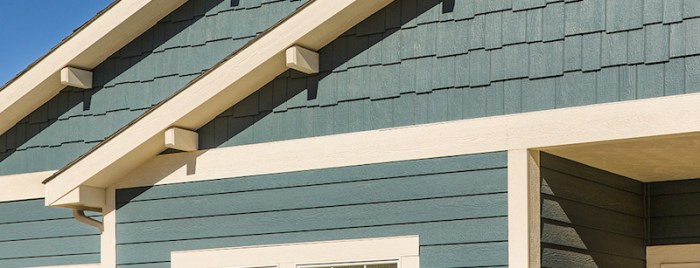
Choosing the right siding for your UK home involves careful consideration of not only aesthetics but also the significant financial implications. The total cost isn’t just the price of the materials; it’s a complex equation encompassing several key factors that can dramatically impact your budget. Understanding these variables will empower you to make informed decisions and avoid unexpected expenses.
This section will break down the pricing structures, influencing factors, and long-term cost-effectiveness of various siding options.
Siding Material Prices and Brand Variations
The cost of siding varies significantly depending on the material and brand. While price is a key factor, it shouldn’t be the sole determinant. Factors like durability, maintenance requirements, and aesthetic appeal must be weighed against the initial investment. Generally, vinyl siding tends to be the most budget-friendly option, while wood and fibre cement command higher prices due to their premium qualities and longevity.
Brand reputation also plays a role; established brands with a proven track record often come with a slightly higher price tag, reflecting their superior quality control and warranties. For example, a premium brand of vinyl siding might cost 15-20% more than a lesser-known brand, but it could offer a longer warranty and superior resistance to fading and impact damage.
Factors Influencing Overall Siding Installation Costs
Several factors beyond material cost influence the overall expense of a siding installation project. The size and complexity of your home’s exterior are primary considerations. A large, multi-story house with intricate architectural details will naturally require more materials and labor, driving up the cost. The condition of your existing siding also matters; removing old, damaged siding adds to the labor involved.
Furthermore, the need for additional services, such as window and door trim replacement or repairs to underlying wall sheathing, can significantly increase the total project expense. Finally, geographical location impacts labor costs; areas with a higher cost of living will generally reflect this in higher installation fees.
Long-Term Cost-Effectiveness of Different Siding Options
While initial costs vary, the long-term cost-effectiveness of different siding materials needs careful assessment. Vinyl siding, despite its lower upfront cost, may require replacement sooner than more durable options like fibre cement or engineered wood. Fibre cement, known for its exceptional lifespan and resistance to weather damage, represents a higher initial investment but offers significant long-term savings by reducing the need for frequent repairs and replacements.
Wood siding, while aesthetically pleasing, necessitates regular maintenance including painting or staining to prevent rot and insect damage, adding to its overall long-term cost. Consider the total cost of ownership – factoring in maintenance, repairs, and eventual replacement – when comparing different options. For example, while fibre cement might cost twice as much initially as vinyl, its 50-year lifespan versus vinyl’s 20-30 years could significantly reduce the long-term cost per year.
Estimated Cost Per Square Meter for Various Siding Materials
The following table provides estimated costs per square meter for various siding materials from different brands. Remember that these are estimates, and actual prices can vary based on location, installer, and specific product features.
| Siding Material | Brand A (Estimate) | Brand B (Estimate) | Brand C (Estimate) |
|---|---|---|---|
| Vinyl | £50-£70 | £60-£80 | £70-£90 |
| Fibre Cement | £100-£150 | £120-£180 | £150-£200 |
| Engineered Wood | £120-£180 | £150-£220 | £180-£250 |
| Cedar Wood | £180-£250 | £200-£300 | £250-£350 |
Installation and Maintenance
Choosing the right siding for your home is only half the battle; proper installation and ongoing maintenance are crucial for longevity and aesthetic appeal. Different siding materials require specific installation techniques and maintenance schedules to ensure optimal performance and prevent costly repairs down the line. Understanding these processes can save you significant time, money, and frustration in the long run.
Siding Installation Processes
The installation process varies significantly depending on the siding material. For instance, vinyl siding installation typically involves nailing pre-cut panels onto a prepared wall, ensuring proper overlap and alignment for weather resistance. This process is relatively straightforward for DIY enthusiasts with basic carpentry skills. Conversely, wood siding installation demands more precision and expertise. It often requires more intricate cuts and careful attention to detail to prevent warping and rot.
The use of specialized tools, like a miter saw for precise angles, is often necessary. Finally, composite siding, while offering a blend of durability and aesthetic appeal, typically follows an installation process similar to vinyl, but may require specific tools or fasteners recommended by the manufacturer to ensure proper sealing and longevity. Improper installation of any siding type can lead to issues like water damage, warping, and reduced lifespan.
Recommended Maintenance Procedures
Regular maintenance is key to extending the lifespan of your siding. For vinyl siding, regular cleaning with soap and water is usually sufficient to remove dirt and grime. Wood siding requires more diligent care, including regular inspections for signs of rot, insect infestation, and damage. Applying a protective sealant every few years can help to preserve the wood and enhance its weather resistance.
For composite siding, the manufacturer’s recommendations should be followed carefully, as maintenance procedures can vary depending on the specific composition and finish of the material. Neglecting maintenance can lead to premature degradation, requiring expensive repairs or even complete replacement.
Identifying and Addressing Common Siding Problems
Identifying and addressing siding problems promptly is crucial. Common issues include cracks, warping, loose panels, and discoloration. Cracks in vinyl siding can often be repaired with caulking, while warped panels may require replacement. Loose panels should be secured immediately to prevent water damage. Discoloration can be addressed through cleaning or repainting (for wood siding), depending on the cause.
Early detection and prompt repair can prevent minor problems from escalating into costly repairs. Ignoring these issues can result in structural damage and significant repair expenses.
Vinyl Siding Cleaning and Maintenance
Proper cleaning and maintenance of vinyl siding significantly extends its lifespan and maintains its aesthetic appeal. Here’s a step-by-step guide:
- Prepare the area: Clear away any debris or obstacles surrounding the house to allow for easy access and movement.
- Gather your supplies: You’ll need a garden hose with a spray nozzle, a soft-bristled brush or sponge, a bucket, mild detergent (like dish soap), and a ladder (if necessary).
- Rinse the siding: Begin by rinsing the siding with a garden hose to remove loose dirt and grime. Focus on areas with heavy accumulation of dirt.
- Mix the cleaning solution: In the bucket, mix a small amount of mild detergent with water. Avoid harsh chemicals, as they can damage the vinyl.
- Scrub the siding: Using the brush or sponge, gently scrub the siding, paying attention to areas with stubborn stains. Work in sections, rinsing each section as you go.
- Rinse thoroughly: Once the entire siding has been scrubbed, rinse it thoroughly with the garden hose to remove all traces of soap and dirt.
- Inspect for damage: After cleaning, carefully inspect the siding for any signs of damage, such as cracks, loose panels, or discoloration. Address any issues promptly.
Regular adherence to this process can keep your vinyl siding looking its best for years to come.
Closing Summary
Ultimately, selecting the best siding for your UK home depends on a careful balancing act between aesthetics, budget, and long-term maintenance. This guide has equipped you with the information to navigate the complexities of the UK siding market, enabling you to make a confident and informed decision. Remember to factor in the unique selling propositions of each brand, considering their reputation, customer reviews, and sustainability efforts alongside material type and cost.
With this comprehensive overview, you’re well-prepared to embark on your siding project with confidence, transforming your home’s exterior for years to come.
